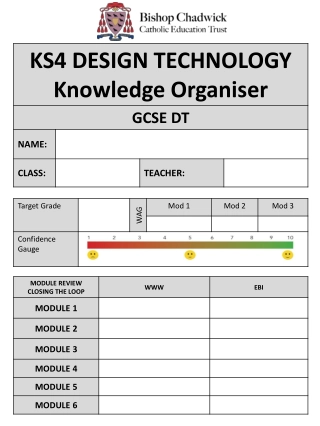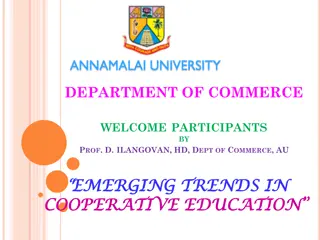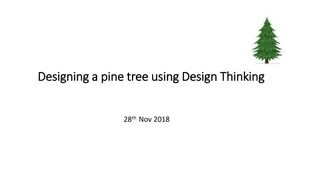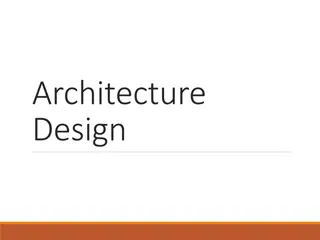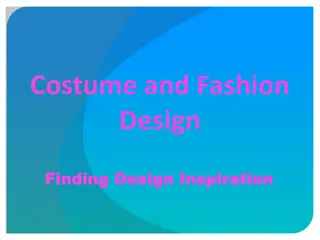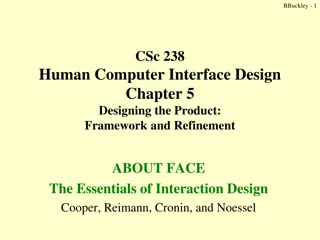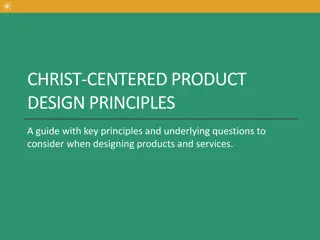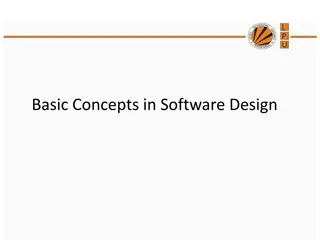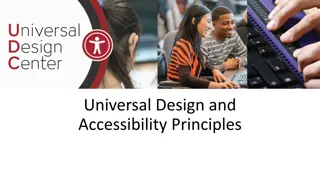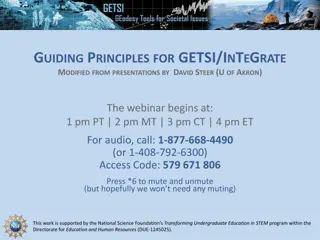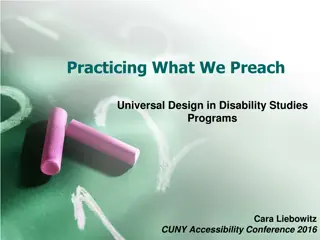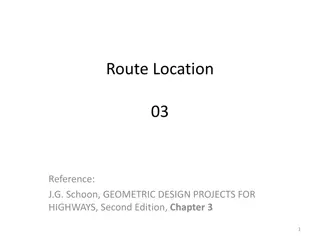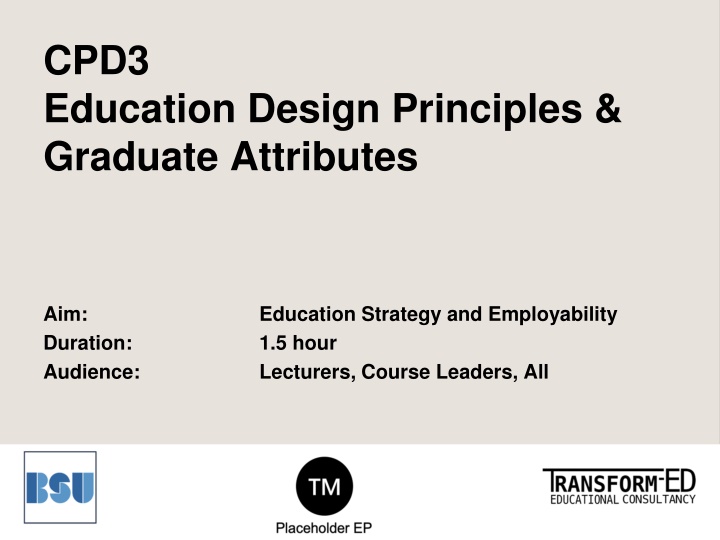
Graduate Attributes and Education Design Principles Integration
Explore the integration of graduate attributes and education design principles at BSU, focusing on adaptability, employability, and student engagement strategies. Reflect on inclusive teaching, connectivity, creativity, and collaborative learning in the educational context. Enhance student skills through problem-based learning and active engagement for future career readiness.
Download Presentation

Please find below an Image/Link to download the presentation.
The content on the website is provided AS IS for your information and personal use only. It may not be sold, licensed, or shared on other websites without obtaining consent from the author. If you encounter any issues during the download, it is possible that the publisher has removed the file from their server.
You are allowed to download the files provided on this website for personal or commercial use, subject to the condition that they are used lawfully. All files are the property of their respective owners.
The content on the website is provided AS IS for your information and personal use only. It may not be sold, licensed, or shared on other websites without obtaining consent from the author.
E N D
Presentation Transcript
CPD3 Education Design Principles & Graduate Attributes Aim: Duration: Audience: Education Strategy and Employability 1.5 hour Lecturers, Course Leaders, All Placeholder EP
Learning Outcomes 1. Reflect about the educational design principles of BSU and how the educational partners adapts, understands and develop them through their own education strategy and corporate plan. 2. Find common aspects in the consideration of employability and the graduate attributes presented in BSU and adapted to educational partners, students profile and demographic. 3. Activate educational design principles applied to the educational partner students demographic and student s profile.
Content BSU Education Design Principles and Enablers Graduate Attributes Interactive exercises for the integration of BSU Education Design Principles and Enablers
Education Design Principles INCLUSIVE TEACHING CONNECTIVITY CREATIVITY COLLABORATIVE LEARNING DIGITAL FLUENCY SUSTAINABILITY CURIOSITY DRIVEN PEDAGOGIES
Make it yours (1) What elements of these seven education design principles are already operating in your institution?
Make it yours (2) BSU Your institution Active Learning Problem Based learning
Connectivity My students are connected with their future careers through developing their academic and employability skills. CONNECTIVITY My teaching and learning activities make the most of connections with research, professional practice and/or knowledge exchange activities.
Graduate Attributes BSU Educational Partner Confidently Self-Aware Emotionally Attuned Inclusive Collaborator Adaptable Innovator Critical Thinker Forward Thinker Ethical Leader Responsible self-starter Compassionate resilient Digitally Resourceful
Creativity My students are encouraged to explore and experiment, through opportunities for active learning and problem-based learning. CREATIVITY My students are enabled to express their learning through authentic assessments.
Sustainability My teaching and learning activities have identified the UN Sustainable Development Goals that are most relevant to this context. SUSTAINABILITY Sustainability literacy is embedded within my teaching and learning activities.
Curiosity Driven Pedagogies (1) What are you curious about?
Make it yours (3) Campus Curriculum Community
Digital Fluency My students use and experience relevant and appropriate digital technologies. DIGITAL FLUENCY My students understand the digital competencies they need and are encouraged to continually develop them. My teaching and learning activities effectively uses the Virtual Learning Environment (or equivalent) to provide a coherent and consistent blended learning experience for our students.
Student Profile Motivations and Goals Frustrations and Pains Demographics Digital Modes Age Gender Family situation Job situation Education Goals Personality Time availability How to engage with students beyond the lecture Monitoring Systems
Inclusive Learning Top Tip Activate the Accessibility Function in your PowerPoint My teaching, learning and assessment materials and activities are inclusive and accessible My teaching and learning activities draw on a diversity of contributors to the discipline. INCLUSIVE TEACHING
Collaborative Learning My students are supported and enabled to participate in collaborative learning Top Tip Check the 8 things which a tutor should decide for group work assessment See link in the notes My students have opportunities to collaborate with staff to co-create their learning. COLLABORATIVE LEARNING
Curiosity Driven Pedagogies (2) Top tip Get involved with the Learning and Teaching Annual Conference at BSU I take an evidence-informed and scholarly approach to developing my curricula and teaching practices. I am supported in developing my expertise for teaching in Higher Education. CURIOSITY DRIVEN PEDAGOGIES
Summary 4 Principles: Connectivity, Creativity, Sustainability and Digital Fluency 3 enablers: Inclusivity, Collaboration and Curiosity Driven pedagogies Graduate Attributes are flexible Knowing your students
Just One Thing Choose one of these principles and try to apply it to your students 19
Resources https://www.bathspa.ac.uk/student-life/why-bath- spa/graduate-attributes/ https://advance-he.ac.uk/knowledge-hub/framework-student- engagement-through-partnership-0 https://www.bathspa.ac.uk/projects/teaching-expertise- guide/inclusive-teaching/ 20

